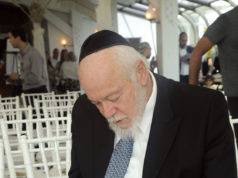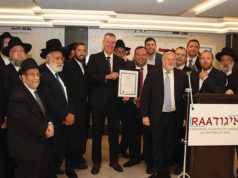
Early Jewish Communities in Cairo
In 641 the Arab general Amr Ibn-el-As conquered Egypt and founded Fostat, (today old Cairo) and made it a capital of Egypt. Jews settled quite early in Fostat as it became a flourishing economic center.
With the conquest of all of Egypt by the Fatimides (969), Cairo was built north of Fostat. Jews moved to the new city and established for themselves a new quarter called Haret-el-Yahoud (Street of the Jews). In time, Cairo became the cultural center of all the Jewish communities in Egypt.
Major Jewish Figures of the Period
A number of major important Jewish figures became prominent, the most important one being Rabbi Moses Ben Maimoun, or Maimonides. He was born in Cordova, (1135-1204) in Spain and took refuge in Egypt because of persecution of Jews by the Muslim Almohades who ruled the southern part of Spain. He became the spiritual head of the Jewish community, and personal physician to the viceroy Saladin. Another illustrious rabbi, Saadia Ben Joseph Gaon (882-942), systematically compiled the sidur with instructions in Arabic, and translated the Bible into Arabic.

Occupation of Egypt by the Ottoman Empire
In 1517, Egypt was occupied by the Ottoman Empire. Many Jews became responsible for the financial administration of the country heading mints, collecting taxes and customs payments. During the 16th century, some Spanish refugees came to Egypt, and in time there were three distinct communities. The Musta’ Arabs (native Arabic speaking Jews), Maghrebim (Jews of North African origin) and Spanish Jews.
During the 17 and18th centuries, the Ottoman empire began to decline, and there was also a decline of Jewish life.
Jews In Modern Egypt
The building of the Suez Canal (1859-1869) caused an influx of Europeans and Jews who came from western countries and Turkey. Their children were able to attend schools where European standards of education were maintained. By 1947, Cairo had about 41,860 Jews.

Major Synagogues in Cairo
By 1940, Cairo had 40 synagogues, all very active. However, during the High Holidays, they could not cope with the demand of seats. It was necessary to rent schools, clubs and private homes to accommodate all those who wanted to attend holiday services. The major and largest synagogue is on Adly Pasha street and was commonly called, “Temple Ismalia.” The Hebrew name was Shaar Ha-Shamayim (Gates of Heaven). It is a fine architectural edifice which reminds one of Solomon’s Temple in Jerusalem. The interior has impressive decorations. There are lotus designs and marble columns. The synagogue, however, is now closed.
The only functioning synagogue at the present time is the one in Meadi, which is attended primarily by Israeli diplomats. Another well-known synagogue is Temple Maimonides. Older people talk about the miraculous cures that took place when patients stayed overnight in a room of the synagogue, dreamed about Rab Moche and hoped to cure their ailment. At the present time, it is in complete disrepair. The ceiling collapsed when the Yom Kippur War started. Another famous synagogue which is considered to be the oldest is the Ben Ezra Synagogue. It became famous because of the discovery of valuable documents stored in the attic above the women’s gallery. In 1896, Solomon Schecter, a scholar of Cambridge University, received from Egypt some Hebrew fragments. He found in one of those documents, the lost Hebrew original of Ecclesiastics. Realizing the great value of this material, he travelled to Egypt and was able to recover about 100,000 documents.

Among the legends associated with this synagogue, is the story that the Pharaoh’s daughter found Moses in the Nile which was close to the synagogue. Most of the other synagogues in Cairo are neglected and in ruins, or have been transformed to mosques, police stations, warehouses, etc. It was reported that many of the religious artifacts, including sifrei Torahs, are being sold to antique dealers.
The Pleasantness of Life in Egypt for the Jews
There were several social clubs in the heart of the city. One was the Club Union Universelle de la Jeunesse Juive (UUJJ). Lectures, plays and dances were given periodically. Later, “Judeo-Espagnol” club was started by Ladino speaking Jews. This was a meeting point to go to the movies, theater, or going to Groppi (which was a favorite restaurant, dancing and entertainment establishment attended mostly by Europeans and Jews). During the summer months, Jews frequently went to open air cinemas or skating rinks. During vacation time, some of the favorite resorts were the beaches of Alexandria, Port-Said and Ras-el-Bar.
Cairo had practically everything that a major European city could offer. There was the Royal Opera House. The first opera was Verdi’s Aida. The most recent movies produced in the USA, England, France and Italy were shown on Egyptian screens. Naturally there were exclusive clubs for the very rich. The occupational structure of Jews in Egypt was similar to the one found in major European capitals. They had fewer children than Jews living in other Arab countries, and furthermore, Jewish women worked. Life tended to be very pleasant.
Changes in the Political Situation During Post-World War II, Leading to the Almost Total Disappearance of the Jewish Community
The above idyllic situation started to deteriorate seriously after 1945. There was some inkling of this even prior to World War II because of the conflict between Arabs and Jews in Palestine and the nationalism which was driving the British out of the country. On November 2, 1945, the first anti-Jewish action was initiated by the Misr el-Fatat (Young Egypt) whose chauvinistic youths wore green shirts. Some synagogues, a Jewish hospital and numerous institutions and shops were damaged or destroyed. Riots, burnings and occasional killings continued intermittently. The most serious ones took place during the anniversary of the Balfour Declaration which promised the Jews a homeland in Israel.
When war started in 1948 between the Arab armies and Israel, a large number of Cairo’s Jewish youth (the exact number has never been identified) were sent to internment camp at Huckstep, a former American airbase. The youths of Alexandria were sent to an internment camp at Aboukir. Many Jewish businesses were sequestered during that period.
By 1952, it is estimated that about 20,000 Jews left Egypt. In 1954, when Nasser took power in Egypt, life for Jews became more difficult. By 1960, about 40,000 Jews left. In the following years, the Jewish population slowly dwindled so that at the present time, it is estimated that there are about 100 Jews in the whole country, with 60 of them still living in Cairo. Jews from Egypt are now dispersed in many major capitals of the world. Several efforts in the past, in France, Italy, Israel, Australia, Brazil, etc. to make these groups coalesce have been unsuccessful. As in the past, these efforts cannot be sustained since there is a certain lack of interest shown by the Jews of Egypt to maintain their patrimony. The time is pressing for its history to be recorded. Many people who have lived in this history will not be alive within 10-20 years and this wonderful saga will be lost forever, unless adequate support is forthcoming and people take responsibility of this historical survival. It should be noted that there has never been a concerted effort on the part of Jews from Egypt to claim the billions of dollars of property left behind in Egypt.



